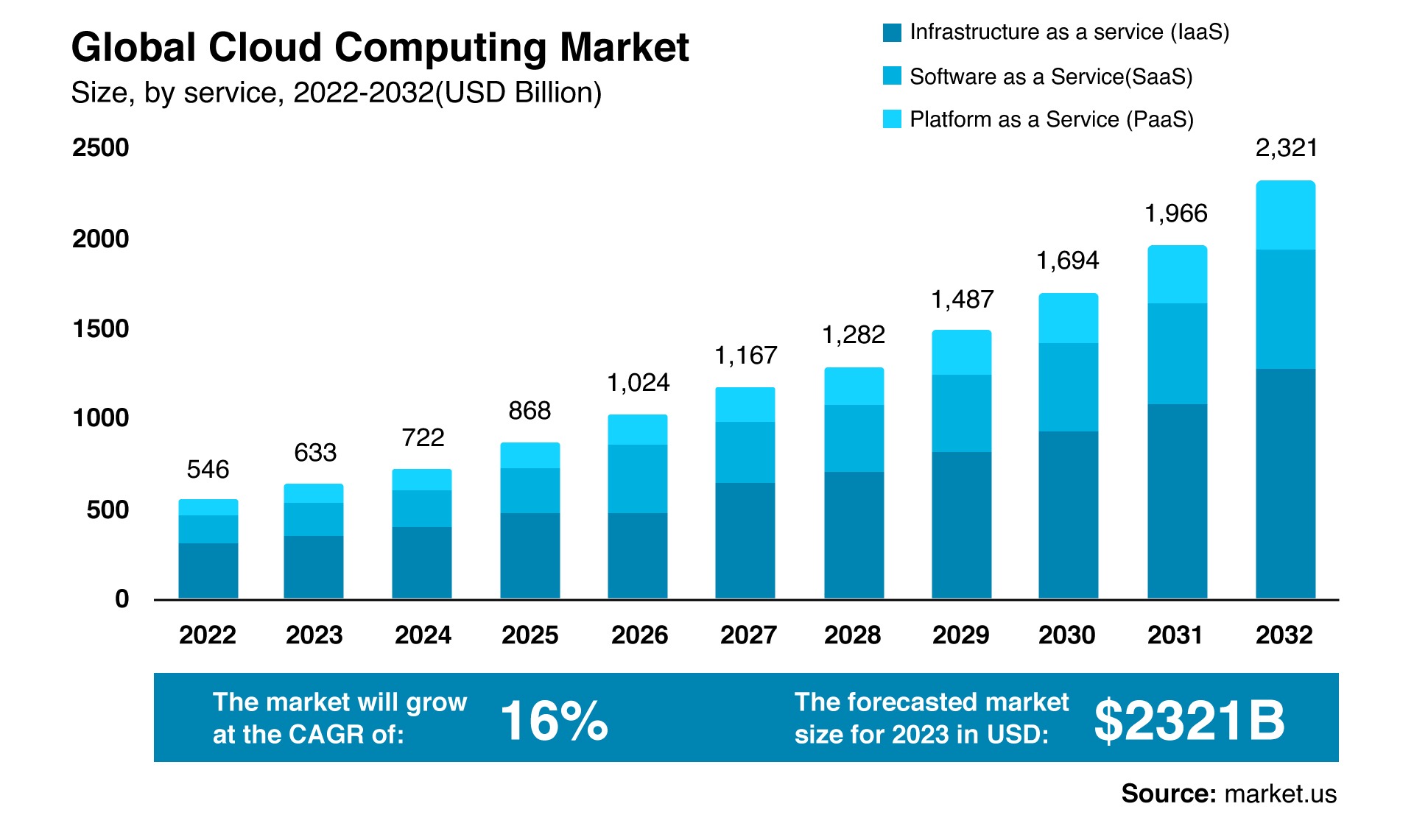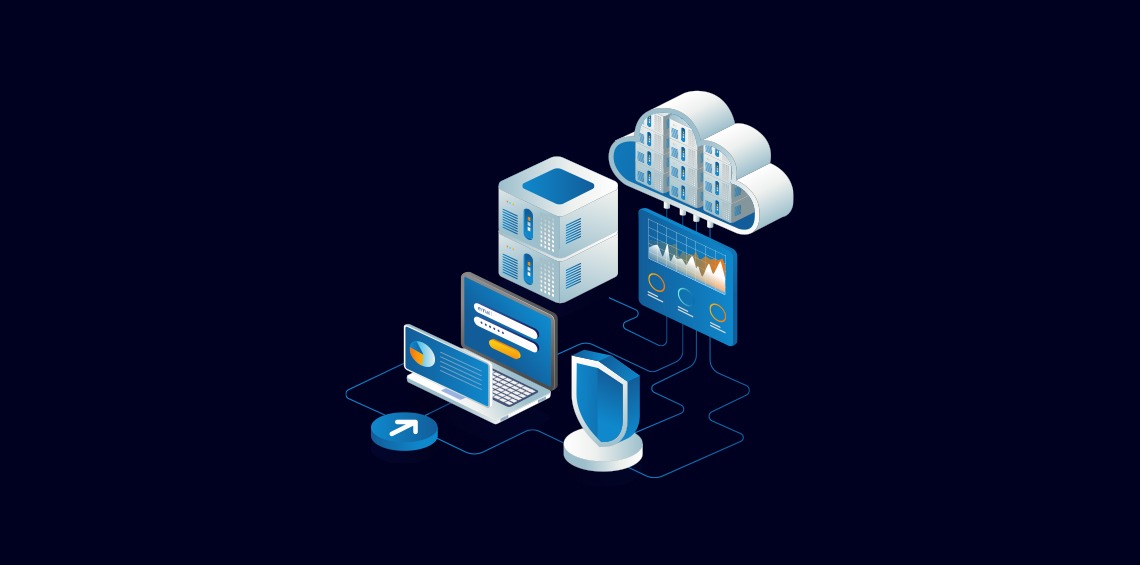Since its advent, cloud computing has transformed how businesses manage, process, and access their data. As an increasing number of companies recognize its advantages, the need for cloud services continues to rapidly escalate. This surge in demand gives rise to new trends that will shape the future of cloud computing. This article will delve into the top 6 cloud computing trends to watch out for in 2023.
Before diving into the major trends, let’s explore some fascinating statistics about the cloud computing industry:
- According to a report by Synergy Research Group, the cloud computing market grew from $26 billion in 2010 to over $250 billion in 2020.
- In 2010, only about 12% of businesses were using cloud computing. By 2020, that number had risen to 94%, according to a report by Flexera.
- Amazon Web Services (AWS), the largest cloud provider, reported revenue of $10.8 billion in the second quarter of 2020, up 29% from the same period in the previous year.
- Microsoft’s cloud division, which includes Azure and Office 365, reported revenue of $13.4 billion in the fourth quarter of 2020, up 17% from the same period in the previous year.
These stats demonstrate the incredible growth of the cloud computing market over the past decade and the increasing adoption of cloud services by businesses and individuals.

Top 6 Cloud Trends 2023:
1. Multi-Cloud Adoption
The adoption of multi-cloud strategies has been on the rise in recent years, and it is expected to become even more prevalent in 2023. Multi-cloud refers to the use of multiple cloud providers to avoid vendor lock-in, increase flexibility, and take advantage of the best services across different cloud providers.
With multi-cloud, businesses can choose the most suitable cloud provider for each workload, depending on factors such as cost, performance, and security. This allows the ability to mix and match services from different cloud providers, which can lead to significant cost savings and increased efficiency. 90% of larger enterprises have already stayed ahead by adopting multi-cloud in 2021.
However, managing multiple cloud environments can be complex, and businesses will need to invest in the necessary tools and expertise to effectively manage their multi-cloud environments.
2. Edge Computing
Edge computing is an innovative framework that stores and processes data in close proximity to the user’s device, as opposed to traditional cloud computing where data moves between the device and the data center. This method minimizes latency, enhances response time, and preserves network bandwidth. This minimization of travel time for data reduces latency, which is especially important with the rapidly increasing number of IoT devices.
By 2025, it is estimated that there will be around 27 billion IoT devices generating over 50 zettabytes of data and the worldwide edge computing market will reach 274 billion U.S. dollars.
The proliferation of Internet of Things (IoT) devices and the need for real-time data processing and analysis will drive the adoption of edge computing in 2023.
There are a variety of industries that use edge computing, including healthcare, manufacturing, and transportation.
For example, in healthcare, edge computing can be used to process medical data from wearable devices, enabling healthcare providers to monitor patients in real time and respond to emergencies quickly.
3. Quantum Computing
Quantum computing is a field that explores the use of quantum-mechanical phenomena, such as superposition and entanglement, to perform computations. In addition to solving complex problems, quantum computing offers the potential for a number of other benefits.
While still in its early stages, quantum computing is expected to have a significant impact on cloud computing in 2023 and market revenue is expected to reach 93 billion dollars in 2040. As quantum computers become more powerful, they will enable businesses to perform complex simulations and optimization tasks that were previously impossible. This trend will drive the development of new quantum computing infrastructure, and businesses will need to invest in this technology to stay competitive.
4. Use of Artificial Intelligence (AI) and Machine Learning is on the rise
The availability of powerful AI and machine learning tools in the cloud is enabling more businesses to leverage these technologies to gain insights and automate processes. In 2023, we can expect to see increased adoption of AI and machine learning in the cloud. AI and machine learning can be used in a variety of industries, including healthcare, finance, and manufacturing.
For example,
- In healthcare, AI and machine learning can be used to analyze medical data, enabling healthcare providers to make more informed decisions about patient care.
- In finance, AI and machine learning can be used to analyze financial data, enabling businesses to make better investment decisions.
- In manufacturing, AI and machine learning can be used to optimize production processes, reducing waste and increasing efficiency.
The global AI market is projected to reach over half a trillion dollars by 2024, according to IDC. Research suggests the market will reach over 1.5 trillion U.S. dollars by 2030.
5. Serverless Computing
Serverless computing refers to the practice of running code without the need to manage servers or infrastructure.
With serverless computing, businesses can focus on code development rather than infrastructure management, which can lead to significant cost savings and increased agility. Serverless computing can also scale automatically based on demand, which helps businesses manage spikes in traffic without the need for additional infrastructure.
The use of serverless computing is not limited to web applications but is applicable to mobile applications and Internet of Things applications as well.
For example, in web applications, serverless computing can be used to process user requests, enabling businesses to respond to customer requests quickly and efficiently.
6. Cloud Security
The threat of data loss is a major concern for businesses transitioning to the cloud. 45% of data breaches occurred in cloud environments, costing an average of over $1 million. As a result, companies are focusing on strengthening their cloud security against cyberattacks, leading to a projected growth in the global cloud security software market to $37 billion by 2026. This growth is partly due to increased government oversight, which may influence future cloud compliance standards. The impact of data breaches on businesses can be severe, particularly if customer data is compromised. In the UK, non-compliance with GDPR data protection regulations can lead to a penalty of up to £17.5 million or 4% of a company’s global annual revenue—whichever is higher.
Human error remains the top contributor to data loss, responsible for 88% of cloud data breaches. Studies also indicate that remote work has heightened cloud computing security risks, with 47% of employees falling victim to phishing scams due to distractions. It is evident that remote workers tend to be more distracted; thus, preventative measures must be taken against data loss.
The National Cyber Security Center suggests that businesses should scrutinize and adjust user permissions. One study discovered that 99% of access management policies are excessively permissive, exposing companies to significant risks. Properly managing user permissions plays a crucial role in reducing the potential damage caused by breached user credentials.
The global cloud security software market had a value of 29.5 billion U.S. dollars in 2020 and is projected to reach an estimated 37 billion U.S. dollars by the year 2026.
Conclusion
Organizations that are quick to adopt these trends will be better positioned to leverage the full benefits of cloud computing and stay ahead of their competitors. However, it is essential to keep in mind that every organization’s cloud journey is unique, and what works for one may not work for another.
Therefore, it is crucial to evaluate each trend carefully and determine which ones align with your organization’s goals, objectives, and business requirements. Additionally, it is important to have a comprehensive cloud strategy in place, considering the risks, costs, and benefits of each technology to ensure successful cloud adoption.
Hire an experienced consultant specializing in Cloud Computing services who can assist your business with devising strategies and guidance.
